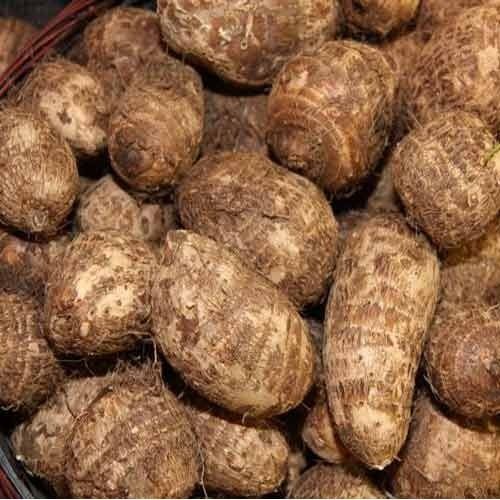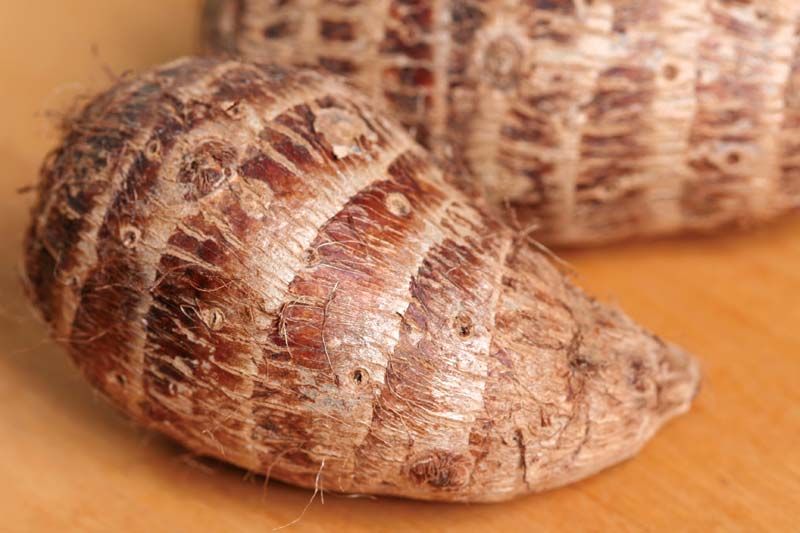
“Storing Sliced Raw Taro”
- Introduction
- Overview of taro and its importance in various cuisines.
- Challenges of storing sliced raw taro.
- Importance of proper storage to maintain freshness and prevent spoilage.
- Understanding Taro: A Brief Background
- History and cultivation of taro (Colocasia esculenta).
- Nutritional benefits of taro.
- Different types of taro and their culinary uses.
- The Science Behind Taro Storage
- Understanding the composition of taro and its susceptibility to spoilage.
- The role of moisture, temperature, and air exposure in taro spoilage.
- The enzymatic browning process and how it affects taro storage.
- Safety Considerations
- Potential risks of storing taro improperly.
- How to handle taro to avoid contamination.
- Recognizing signs of spoilage and toxicity in taro.
- Step-by-Step Guide to Storing Sliced Raw Taro
- Preparation
- Selecting fresh taro.
- Cleaning and peeling taro to reduce bacterial contamination.
- Slicing taro correctly to minimize damage and browning.
- Storage Techniques
- Refrigeration
- Best practices for refrigerating sliced raw taro.
- Suitable containers and materials for storage.
- Expected shelf life in the refrigerator.
- Freezing
- How to properly freeze sliced taro.
- Blanching and its importance in preventing freezer burn.
- Storage time and thawing methods.
- Vacuum Sealing
- Benefits of vacuum sealing for extending taro’s shelf life.
- Step-by-step vacuum sealing process.
- Combining vacuum sealing with refrigeration or freezing.
- Drying and Dehydration
- Methods for drying or dehydrating taro slices.
- Storage of dried taro and rehydration techniques.
- Refrigeration
- Storage Conditions
- Ideal temperature and humidity levels for storing taro.
- Importance of avoiding exposure to light and air.
- Preparation
- Alternative Preservation Methods
- Pickling taro slices.
- Fermenting taro.
- Canning taro: methods and safety precautions.
- Culinary Uses for Stored Taro
- Incorporating stored taro into various dishes.
- Recipes using refrigerated, frozen, or dehydrated taro.
- Tips for cooking with stored taro.
- Common Mistakes and Troubleshooting
- Identifying and avoiding common mistakes in storing taro.
- Troubleshooting issues such as browning, mold growth, or texture loss.
- Health Considerations
- Nutritional impact of stored taro.
- Addressing concerns about oxalates in taro and their effect on health.
- Benefits and drawbacks of different storage methods on taro’s nutritional content.
- Conclusion
- Recap of best practices for storing sliced raw taro.
- Encouragement to experiment with different storage methods.
- Final thoughts on maximizing taro’s shelf life while maintaining its quality.
1. Introduction

Taro, a starchy root vegetable with a rich history in tropical and subtropical regions, is a staple in many cuisines around the world. Known for its versatility in both sweet and savory dishes, taro is enjoyed in a variety of forms—from boiled and mashed to fried and baked. However, once taro is sliced, it can quickly become susceptible to spoilage and browning, making proper storage essential to preserving its freshness and flavor.
In this article, we will explore the challenges and solutions for storing sliced raw taro. Whether you are a home cook looking to extend the shelf life of your taro or a food enthusiast interested in maximizing its culinary potential, this guide will provide you with all the information you need to keep your taro fresh, safe, and ready to use.
2. Understanding Taro: A Brief Background
Taro (Colocasia esculenta) has been cultivated for thousands of years, primarily in Asia, Africa, and the Pacific Islands. It is a staple food in many cultures, prized for its starchy texture and subtle, nutty flavor. The plant grows in wet, tropical climates and is known for its large, heart-shaped leaves and underground corms, which are the edible part of the plant.
Nutritionally, taro is an excellent source of dietary fiber, vitamins E and C, potassium, and manganese. It is also rich in complex carbohydrates, making it an ideal energy source. Taro is naturally gluten-free and is often used as a substitute for other starchy vegetables like potatoes.
There are several varieties of taro, each with its unique characteristics. The most common types include the large corms, which are typically boiled or baked, and the smaller, more tender varieties that are often used in desserts or as thickeners in soups and stews. Understanding the specific type of taro you are working with is essential for proper storage and culinary use.
3. The Science Behind Taro Storage
Taro, like many root vegetables, has a high moisture content, which makes it susceptible to spoilage when sliced. The exposure of sliced taro to air can lead to enzymatic browning, where the flesh of the taro turns brown due to the oxidation of phenolic compounds. This browning not only affects the appearance but can also impact the taste and texture of the taro.
Temperature plays a crucial role in the preservation of sliced raw taro. When stored at room temperature, taro can quickly spoil due to the growth of bacteria and mold. Refrigeration slows down these processes, while freezing can preserve the taro for an extended period.
Understanding the moisture content, enzymatic activity, and the effects of temperature on taro is key to developing effective storage methods. By controlling these factors, you can significantly extend the shelf life of sliced raw taro and maintain its quality for future use.
4. Safety Considerations
Storing taro improperly can lead to a variety of safety concerns. One of the primary risks is the growth of harmful bacteria, such as Clostridium botulinum, especially if taro is stored in an anaerobic (oxygen-free) environment without proper precautions. Additionally, improperly stored taro can develop mold, which can produce mycotoxins that are harmful if ingested.
Another important consideration is the presence of oxalates in taro. Oxalates are naturally occurring compounds that can form crystals in the body, leading to kidney stones in susceptible individuals. While cooking reduces the oxalate content in taro, proper storage can help prevent any increase in oxalate levels due to spoilage.
To ensure safety, it is essential to handle taro with clean, sanitized tools and to store it under conditions that minimize the risk of contamination. Recognizing signs of spoilage, such as off-odors, slimy textures, or unusual colors, is also crucial to avoiding potential health risks.
5. Step-by-Step Guide to Storing Sliced Raw Taro

Preparation
Selecting Fresh Taro: Start by choosing taro that is firm, free from bruises, and has smooth, unblemished skin. Fresh taro should have a slightly sweet, earthy aroma.
Cleaning and Peeling: Wash the taro thoroughly under running water to remove any dirt or debris. Use a vegetable peeler to remove the tough outer skin, being careful not to cut too deeply into the flesh. After peeling, rinse the taro again to remove any remaining dirt or sap.
Slicing Taro: When slicing taro, use a sharp knife to create even slices. Uneven slices can lead to inconsistent storage results, with thinner slices spoiling more quickly than thicker ones. For best results, slice taro just before you plan to store it, as exposure to air can cause browning.
Read this also:- Alfredo sauce recipe Fluffy pancake recipe
Storage Techniques
Refrigeration: Place the sliced taro in an airtight container or wrap it tightly in plastic wrap to prevent air exposure. Store the container in the refrigerator, ideally at a temperature between 35-40°F (1.6-4.4°C). Properly stored, sliced raw taro can last in the refrigerator for 2-3 days. To prevent browning, you can also immerse the taro slices in water with a bit of lemon juice or vinegar before refrigeration.
Freezing: To freeze taro, blanch the slices in boiling water for 2-3 minutes, then immediately transfer them to an ice bath to stop the cooking process. Blanching helps to preserve the color, texture, and nutritional value of the taro. After blanching, pat the taro slices dry and spread them out on a baking sheet in a single layer. Freeze the slices until solid, then transfer them to a freezer-safe bag or container. Frozen taro can be stored for up to 6 months. Thaw the slices in the refrigerator before using them.
Vacuum Sealing: Vacuum sealing is an excellent way to extend the shelf life of sliced raw taro by removing air and preventing oxidation. Place the taro slices in a vacuum seal bag, making sure they are in a single layer. Use a vacuum sealer to remove the air and seal the bag. Store the vacuum-sealed taro in the refrigerator or freezer. Vacuum-sealed taro can last up to 2 weeks in the refrigerator and up to 12 months in the freezer.





